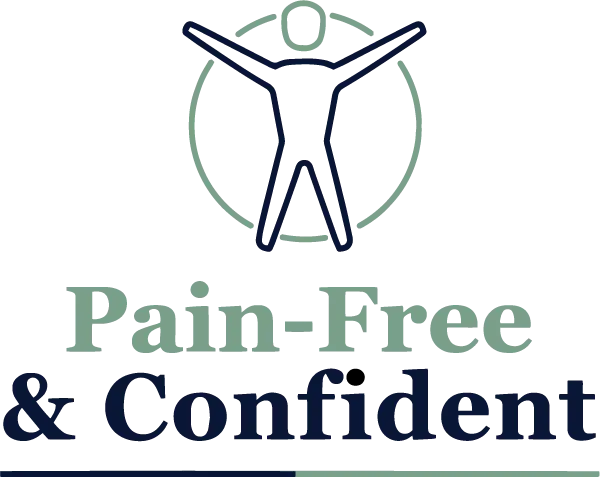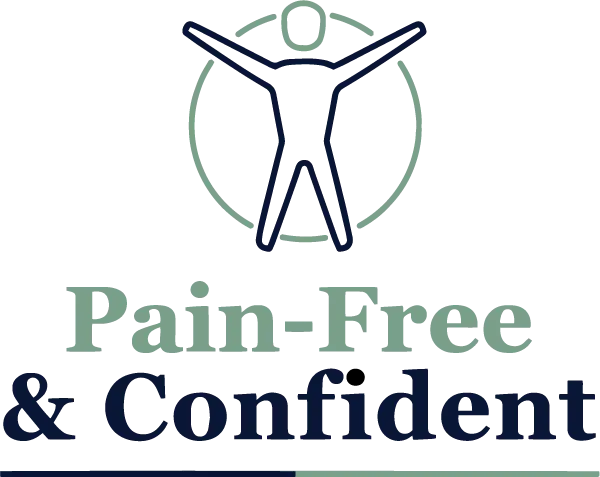Minimizing Aggravators and Triggers
This is an absolutely critical practice for golfers aiming to become Pain-Free & Confident. In the short-term, you must reduce elements which trigger or aggravate your pain. Otherwise it’s impossible to regain the cliff top.
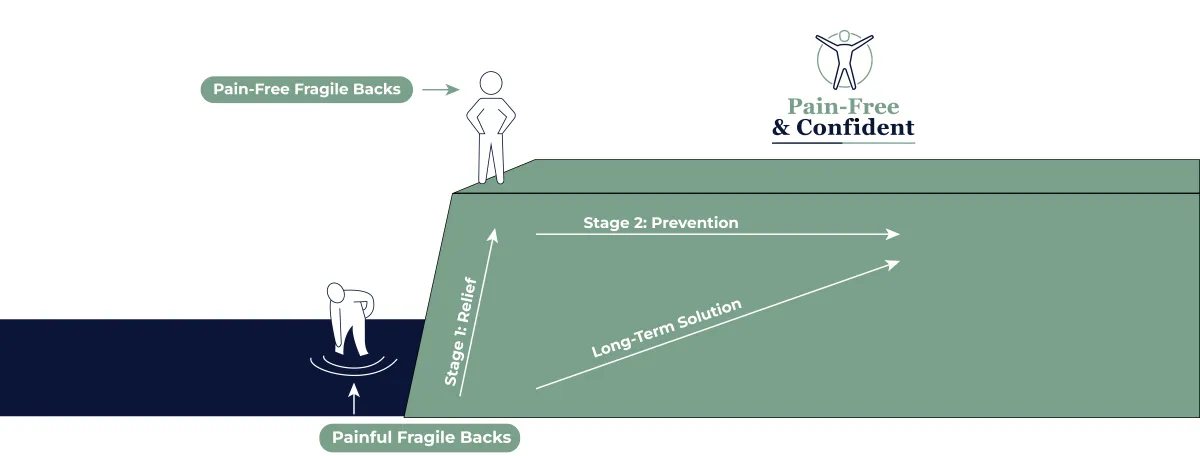
Identify Triggers & Aggravators
To reduce pain, it’s crucial to know what triggers it and what makes it worse. Think of this as finding the obstacles on your golf course. Without knowing where the hazards are, you can’t avoid them. Pain Triggers and Aggravators can be activities, movements, or even foods that increase your pain. By identifying these, you can take steps to avoid them - or modify them - and thereby reduce your pain.
Avoid Painful Movements
Some movements can make your pain worse. It’s important to figure out which ones they are. For golfers, certain swings or postures might be problematic. You don’t have to give up golf, but you might need to adjust how you play. Work with a coach or physical therapist to learn pain-free techniques. By avoiding painful movements, you can still enjoy your game without increasing your pain.
Posture Tips
“Good posture” can make a big difference in managing pain. If slouching or sitting for long periods aggravates your back, then you need to avoid sitting or find a way of sitting that doesn’t have this effect on your pain. Think about your posture during daily activities. Are you sitting up straight? Are you bending your knees when lifting? Practicing good posture habits can help reduce the stress on your back and lower your pain.
Bear in mind that although there’s a lot published on “good posture”, this may not be right for you. In the short-term you have to modify your posture so that your pain is reduced; sitting and standing up tall may work for 80% of golfers, but not for the other 20%.
Anti-Inflammatory Diet
What you eat can affect your pain levels. Some foods can cause inflammation, which can make pain worse. Foods like sugary snacks, processed foods, and red meat can be culprits. Instead, focus on an anti-inflammatory diet. Eat plenty of fruits, vegetables, whole grains, and lean proteins. Drinking lots of water also helps. By eating right, you can reduce inflammation and pain.
Modify Your Routine
Small changes in your daily routine can have a big impact on your pain. For example, if sitting for long periods makes your pain worse, try to stand up and stretch every 30 minutes. If certain activities are too painful, find alternatives. Instead of carrying heavy bags, use a cart. Modifying your routine can help you avoid pain triggers and make daily life more comfortable.
Pain-Reducing Exercises
Exercise can help reduce pain, but it’s important to choose the right ones. Gentle mobilising exercises often help. But - much like “good posture”, what helps one golfer could aggravate another.
If you’d like help with this, try our Rapid Relief Plan. Rapid Relief
Avoid high-impact activities that can strain your back. Always warm up before exercising and cool down afterwards. By staying active with pain-reducing exercises, you can keep your body active and reduce your pain.
Putting It All Together
Reducing things that aggravate pain is like improving your golf game. You need to identify the hazards, avoid painful movements, practice good habits, eat right, modify your routine, and stay active. By doing these things, you can lower your pain and enjoy life more.
Tools to Help You Reduce Pain
To make reducing pain easier, here are some tools you can use:
Pain Trigger Journal: Keep a journal to note what activities or foods increase your pain.
Posture Reminders: Set reminders on your phone or computer to check your posture throughout the day.
Exercise Plan: Work with a physical therapist to create an exercise plan that suits your needs.
Tips for Success
- Be Patient: Changes take time. Be patient and give your body time to adjust to new habits.
- Stay Consistent: Consistency is key. Stick to your new habits, even on days when you feel better.
- Get Support: Don’t be afraid to ask for help. Whether it’s from a coach, therapist, or friend, support can make a big difference.
Sharing Your Progress
When you visit your doctor or therapist, share your pain trigger journal and any changes you’ve made. This can help them understand your progress and make further recommendations. They can also provide additional tips and adjustments to help you reduce your pain.
Why Reducing Pain Aggravators Matters
Reducing things that aggravate your pain is important because it helps you manage your condition better. By avoiding triggers and adopting healthy habits, you can lower your pain levels and improve your quality of life. This knowledge empowers you to make informed choices about your activities, diet, and exercise.
To exemplify the point…
When I had persistent lower back pain and sciatica in my 20s I used to sit for as long as I could tolerate it - especially in lectures. Often this was a mere 10 minutes. Then I’d walk around at the back of the room for the rest of the lecture. This was my modus operandi for years. Eventually it dawned on me that avoiding sitting in the first place would help my back to settle. It did.
Stay Positive
Reducing pain can sometimes be challenging, especially when making changes to long-standing habits. But remember, every small step counts. Celebrate the small victories, like a day with less pain or being able to enjoy a pain-free round of golf. Each step forward is progress.
Conclusion
Reducing things that aggravate your pain is one of the 6 key practices for overcoming persistent lower back pain. By identifying triggers, avoiding painful movements, practicing good posture, eating an anti-inflammatory diet, modifying your routine, and doing pain-reducing exercises, you can take control of your pain. This will help you play golf and enjoy other activities with confidence and less pain. Keep at it, and remember that each small step brings you closer to a pain-free life.

Gavin Routledge
Reduce
Minimizing Aggravators and Triggers
This is an absolutely critical practice for golfers aiming to become Pain-Free & Confident. In the short-term, you must reduce elements which trigger or aggravate your pain. Otherwise it’s impossible to regain the cliff top.
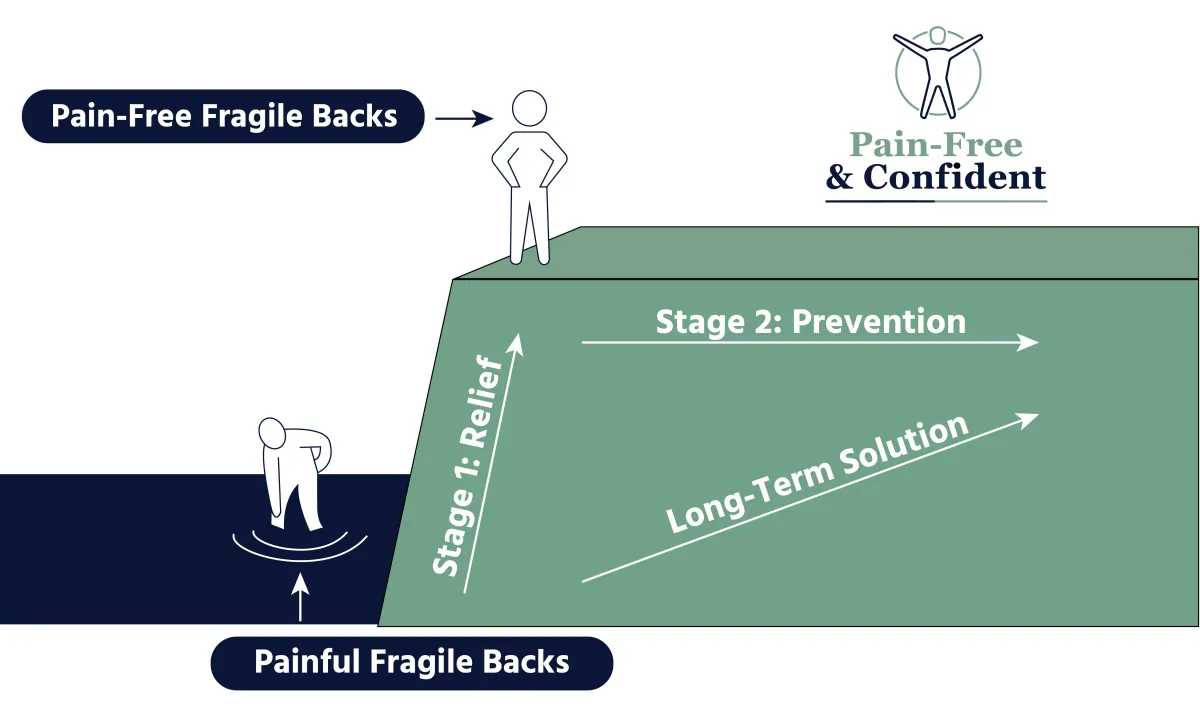
Identify Triggers & Aggravators
To reduce pain, it’s crucial to know what triggers it and what makes it worse. Think of this as finding the obstacles on your golf course. Without knowing where the hazards are, you can’t avoid them. Pain Triggers and Aggravators can be activities, movements, or even foods that increase your pain. By identifying these, you can take steps to avoid them - or modify them - and thereby reduce your pain.
Avoid Painful Movements
Some movements can make your pain worse. It’s important to figure out which ones they are. For golfers, certain swings or postures might be problematic. You don’t have to give up golf, but you might need to adjust how you play. Work with a coach or physical therapist to learn pain-free techniques. By avoiding painful movements, you can still enjoy your game without increasing your pain.
Posture Tips
“Good posture” can make a big difference in managing pain. If slouching or sitting for long periods aggravates your back, then you need to avoid sitting or find a way of sitting that doesn’t have this effect on your pain. Think about your posture during daily activities. Are you sitting up straight? Are you bending your knees when lifting? Practicing good posture habits can help reduce the stress on your back and lower your pain.
Bear in mind that although there’s a lot published on “good posture”, this may not be right for you. In the short-term you have to modify your posture so that your pain is reduced; sitting and standing up tall may work for 80% of golfers, but not for the other 20%.
Anti-Inflammatory Diet
What you eat can affect your pain levels. Some foods can cause inflammation, which can make pain worse. Foods like sugary snacks, processed foods, and red meat can be culprits. Instead, focus on an anti-inflammatory diet. Eat plenty of fruits, vegetables, whole grains, and lean proteins. Drinking lots of water also helps. By eating right, you can reduce inflammation and pain.
Modify Your Routine
Small changes in your daily routine can have a big impact on your pain. For example, if sitting for long periods makes your pain worse, try to stand up and stretch every 30 minutes. If certain activities are too painful, find alternatives. Instead of carrying heavy bags, use a cart. Modifying your routine can help you avoid pain triggers and make daily life more comfortable.
Pain-Reducing Exercises
Exercise can help reduce pain, but it’s important to choose the right ones. Gentle mobilising exercises often help. But - much like “good posture”, what helps one golfer could aggravate another.
If you’d like help with this, try our Rapid Relief Plan. Rapid Relief
Avoid high-impact activities that can strain your back. Always warm up before exercising and cool down afterwards. By staying active with pain-reducing exercises, you can keep your body active and reduce your pain.
Putting It All Together
Reducing things that aggravate pain is like improving your golf game. You need to identify the hazards, avoid painful movements, practice good habits, eat right, modify your routine, and stay active. By doing these things, you can lower your pain and enjoy life more.
Tools to Help You Reduce Pain
To make reducing pain easier, here are some tools you can use:
Pain Trigger Journal: Keep a journal to note what activities or foods increase your pain.
Posture Reminders: Set reminders on your phone or computer to check your posture throughout the day.
Exercise Plan: Work with a physical therapist to create an exercise plan that suits your needs.
Tips for Success
- Be Patient: Changes take time. Be patient and give your body time to adjust to new habits.
- Stay Consistent: Consistency is key. Stick to your new habits, even on days when you feel better.
- Get Support: Don’t be afraid to ask for help. Whether it’s from a coach, therapist, or friend, support can make a big difference.
Sharing Your Progress
When you visit your doctor or therapist, share your pain trigger journal and any changes you’ve made. This can help them understand your progress and make further recommendations. They can also provide additional tips and adjustments to help you reduce your pain.
Why Reducing Pain Aggravators Matters
Reducing things that aggravate your pain is important because it helps you manage your condition better. By avoiding triggers and adopting healthy habits, you can lower your pain levels and improve your quality of life. This knowledge empowers you to make informed choices about your activities, diet, and exercise.
To exemplify the point…
When I had persistent lower back pain and sciatica in my 20s I used to sit for as long as I could tolerate it - especially in lectures. Often this was a mere 10 minutes. Then I’d walk around at the back of the room for the rest of the lecture. This was my modus operandi for years. Eventually it dawned on me that avoiding sitting in the first place would help my back to settle. It did.
Stay Positive
Reducing pain can sometimes be challenging, especially when making changes to long-standing habits. But remember, every small step counts. Celebrate the small victories, like a day with less pain or being able to enjoy a pain-free round of golf. Each step forward is progress.
Conclusion
Reducing things that aggravate your pain is one of the 6 key practices for overcoming persistent lower back pain. By identifying triggers, avoiding painful movements, practicing good posture, eating an anti-inflammatory diet, modifying your routine, and doing pain-reducing exercises, you can take control of your pain. This will help you play golf and enjoy other activities with confidence and less pain. Keep at it, and remember that each small step brings you closer to a pain-free life.

Gavin Routledge
Our Mission
Our mission is to empower the world’s golfers to build a strong pain-free lower back they can have confidence in, and to optimise their health so that they can look forward to golfing into their 90s.
CONTACT INFORMATION
10 Atholl Place Edinburgh EH3 8HP
